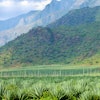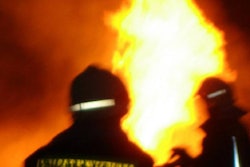
Seaboard Foods nutritionist says company uses pelleted feeds for Oklahoma operations but mash feed for Iowa operations
Pig producers would be wise to take their geographical location and its available resources into account when determining what types of feed make the most economic sense, said Josh Flohr, lead nutritionist for Seaboard Foods.
Flohr, speaking at the Kansas State University Swine Day on November 21, told about Seaboard’s operations, which involves a plant in Guymon, Oklahoma, and another in Sioux City, Iowa. Each plant and its supply chain are quite different, including the available resources in each region, he said.
That has played into the company’s decision-making process regarding whether to pelletized feed or to use a mash feed, he said.
Flohr refers to Guymon and the Oklahoma panhandle as a “very resource-scarce region of production,” when compared with Iowa, saying labor is short and feed mills are pushed to capacity.
“In Guymon, we pellet all of our diets and all of our feed, versus Iowa where, today, the only thing we pellet are starter diets,” Flohr said.
In Guymon, there is a much higher corn basis in that region, Flohr said, and there is less availability of byproduct ingredients, such as dried distillers grains with solubles (DDGS). Milling resources are scarce near Guymon, as well.
In contrast, in Iowa, there is a lower corn basis, there is a higher availability of byproduct ingredients, and there are toll milling options.
Infrastructure considerations
There are also factors involved that include the feed mill infrastructures. Operations in the Guymon area were built for pelleted feed.
“If you’ve ever built a system on feeding pelleted feed and you try to run mash through it, it doesn’t work. The times that we’ve gone to mash, it’s very challenging from a flowability standpoint,” Flohr said.
The infrastructure around Sioux City operations is more conducive to feeding mash, and it would require capital investments to switch to pelleted feed.
However, Flohr said the decision to feed pellets to its pigs that support the Guymon plant and to feed mash to its pigs that support the Iowa plant is not set in stone.
“We reserve the right to get smarter, so if economic situations change, we will look at changing with that,” he said.
















